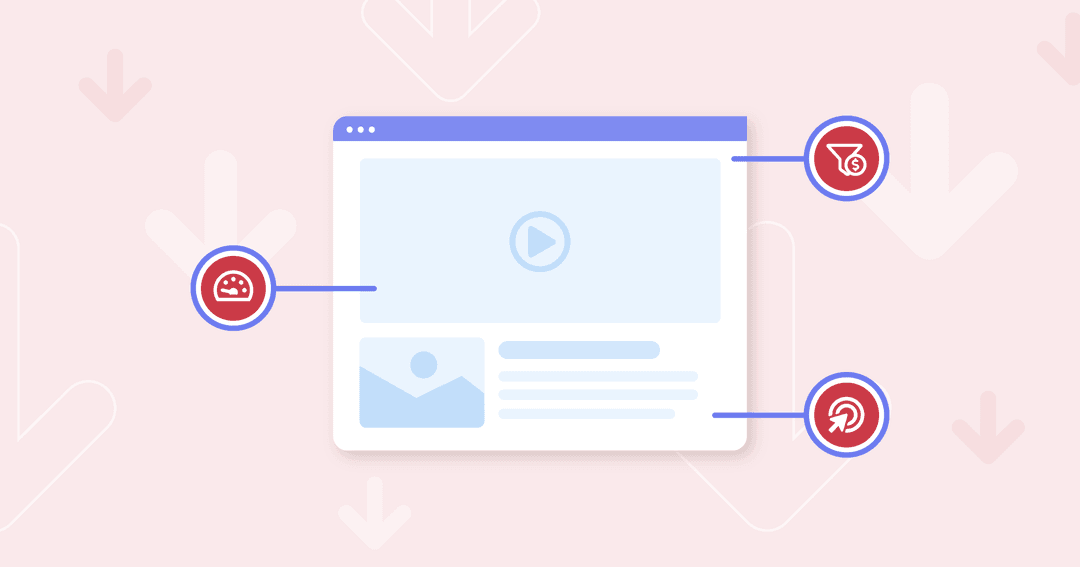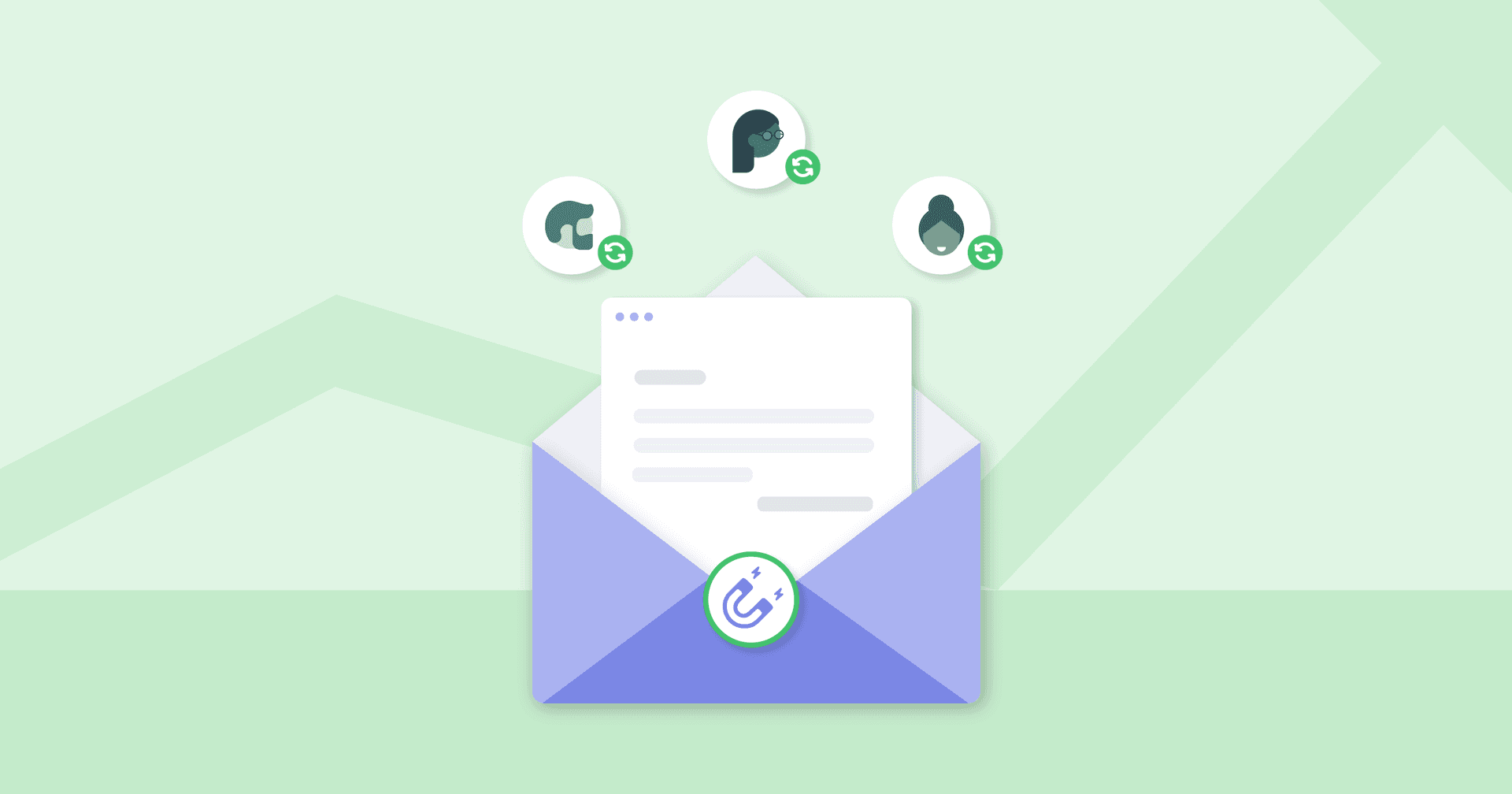Table of Contents
Table of Contents
- Why Update Your Marketing Agency's Website?
- Examples of Top Marketing Agency Websites
- How To Optimize Your Marketing Agency Website
- What Is Conversion Rate in the Context of an Agency Website?
- Establish Conversion Goals
- Monitor Conversion Metrics
- Key Elements To Improve Conversion on Your Agency Website
- Best Practices for Website Conversion Rate Optimization
- How Do I Track My Conversion Rate?
- Best Tools for User Research and Conversion Rate Optimization
- Key Takeaway
7,000+ agencies have ditched manual reports. You can too.
Free 14-Day TrialQUICK SUMMARY:
A marketing agency website acts like a digital handshake, reflecting an agency's quality, expertise, and brand. An optimal site influences first impressions, showcases knowledge, enhances user experience, and improves SEO ranking. This article explores strategies for agencies to improve their websites to help attract and retain clients.
Imagine landing on a website that greets you with a design straight out of the early 2000s, content that lacks depth, and a navigation experience that leaves you more lost than a tourist without a map.
This isn't a trip down memory lane; it's a reality for too many marketing agency websites. The irony? These are the very entities that promise cutting-edge digital strategies to their clients.
Whether it's a minimalistic website design that forgot to evolve, sub-par content that reeks of “It’ll do,” or SEO practices that seem to ignore the basics like optimized title tags–the gap between promise and delivery can be wide.
Why does this happen? The list of excuses we hear is as creative as the campaigns these agencies run for their clients.
"We're too busy focusing on our clients' success to bother with our website," or "Prospective clients care more about the results we generate than how our website looks." Sometimes, you'll even hear, "Our own site doesn’t need to be flashy; our work speaks for itself."
While these reasons might hold a teaspoon of truth, they overlook a fundamental fact: Your marketing agency's website is often the first impression you make on potential clients. Today, we're going to look at the best ways to optimize this vital tool to ensure your agency presents itself as the powerhouse professional team that you are.
Why Update Your Marketing Agency's Website?
Updating your agency's website is all about creating a comprehensive snapshot of your team's current expertise. Here are the top benefits of giving your digital presence a facelift:
First Impressions Count: The best marketing agency websites reflect the quality of work an agency delivers, making a strong first impression on prospective clients. This is especially important if your agency offers web design services.
Showcase Your Expertise: A well-designed site with authoritative content demonstrates your knowledge and skills, positioning you as a leader in the field.
SEO Benefits: Optimized websites typically rank higher in search results, making it easier for potential clients to find you.
Enhanced User Experience: A smooth, intuitive website encourages visitors to explore your services and contact you.
Competitive Edge: Standing out from the crowd is essential. Top-notch digital marketing agency websites ensure that you're not just another fish in the sea but a shark amongst minnows.
Build Trust: A modern, creative web design builds trust with visitors, showing that you're a forward-thinking agency that invests in its own growth.
Reflects Your Brand: Your website should be a reflection of your agency's brand and values, attracting clients who resonate with what you stand for.
For digital marketing agencies, where trends come and go with the wind, one thing remains constant: the need for marketing agency websites to walk the talk. Whether you're a creative agency aiming to showcase your innovative designs, a digital agency focused on cutting-edge strategies, or a branding agency looking to express your unique viewpoint, your website is your digital handshake.
It's not just about having the best agency websites; it's about ensuring your digital agency website accurately reflects your expertise, your brand, and the exceptional results you deliver to your clients-no matter what niche your agency specializes in.
Let's explore some strategies to transform your online presence from a forgotten task to a cornerstone of your agency's success story.
Examples of Top Marketing Agency Websites
As much as we've seen some examples of what not to do, we have also witnessed some truly exceptional websites that have been crafted by some of our over 7,000 marketing agency customers. These standout websites not only showcase the best in creative web design and digital strategy but also perfectly align with the needs and expectations of their target audiences. Below, we dive into a critical review of several top-performing agency websites, highlighting what makes them so effective.
:Delmain
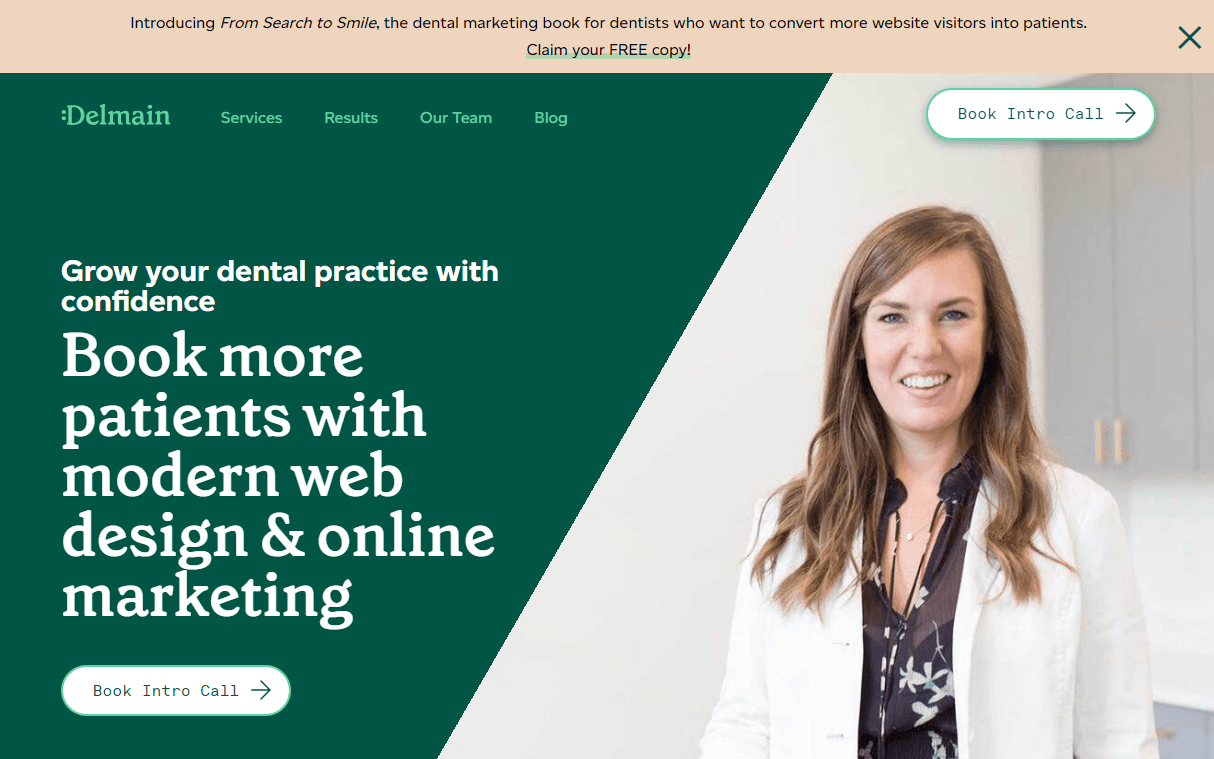
:Delmain targets a niche market by offering specialized marketing and web design services for dental practices. This focus is evident throughout their site (and their logo, which has a really big smile built into the name), which speaks directly to the concerns and aspirations of dental professionals looking to grow their practices.
Niche Targeting: The content is finely tuned to address the unique challenges and opportunities within the dental industry, making it highly relevant to their audience.
User-Friendly Design: The website features an intuitive layout and easy navigation, making it simple for busy dental professionals to find the information they need.
Testimonials and Case Studies: By showcasing success stories and testimonials from other dental practices, :Delmain builds trust and credibility with potential clients.
Squeeze Marketing

Squeeze Marketing differentiates itself with personalized content that resonates with its audience and focuses on the people behind the marketing curtain. Their approach to content marketing is designed to make each visitor feel like the website speaks directly to them.
Personal Experience: The first sense you get when landing on the page is all about the people that clients will be working with. And, yes, that’s the Squeeze team in those homepage videos.
Clear Value Proposition: The messaging is focused and succinct, clearly stating the benefits of their services to prospective clients.
Visual Appeal: The site combines modern design aesthetics with user-friendly functionality, creating a visually appealing and easy-to-navigate environment.
Digilatics

Digilatics excels in converting visitors into leads through a compelling call-to-action (CTA) offering a Free Website Audit and Action Plan right on the homepage.
Strong CTA: The prominent CTA for a free website audit taps into the audience's desire for improvement and growth, encouraging immediate engagement.
Expert Authority: By offering an action plan, they position themselves as experts who not only identify issues but also provide solutions.
Engaging Design: The website design is engaging and professional, reinforcing the quality of the services offered.
JurisPage Legal Marketing

JurisPage effectively communicates its value proposition with the message "Leave the web to us," appealing directly to law firms that prefer to focus on building their client base rather than building their website.
Client-Focused Messaging: This positioning resonates with busy legal professionals looking for a reliable partner to handle their online presence.
Specialized Services: The website highlights their focus on law firms, showcasing expertise that builds trust with potential clients.
Informative Content: JurisPage provides valuable insights and tips on digital marketing for law firms, establishing thought leadership in their niche.
Insights by 42connect

42connect aims to empower small businesses with in-depth and authoritative insights, offering valuable content even before visitors become clients.
Resource-Rich Content: The website is a treasure trove of informative content, helping small businesses understand and leverage digital marketing effectively.
A Clear Focus on Results: The clever usage of “Buzzwords are for bees” helps cut through some of the clutter often found on marketing agency websites and gets right to the point–results.
Professional Design: The site's professional and clean design enhances readability and user experience, making it easier for visitors to navigate through the wealth of information available.
Oh My Digital
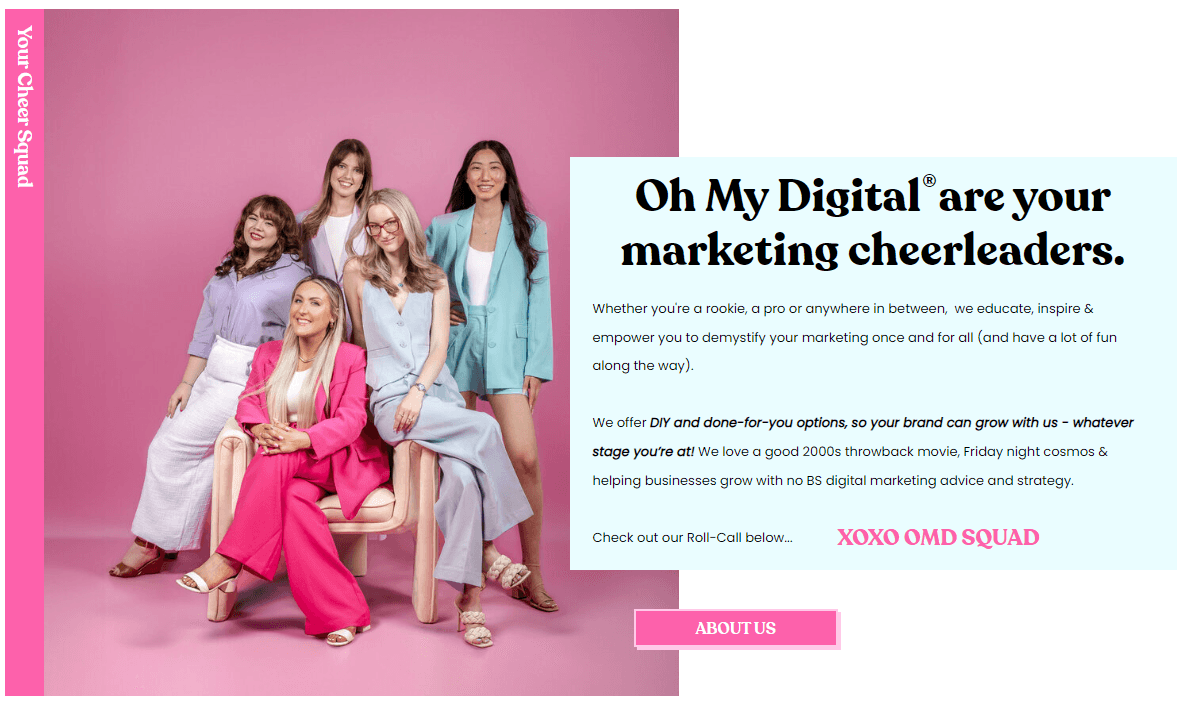
Oh My Digital Agency stands out by embracing the uniqueness and femininity of their brand, which is instantly noticeable through their vibrant design and inclusive messaging. This approach not only sets them apart in a crowded market but also appeals directly to businesses looking for a fresh, relatable digital marketing partner.
Brand Personality: The website radiates a strong, feminine energy that reflects the agency's unique brand identity, making it memorable and distinct.
Inclusive Messaging: Their content speaks in an inclusive, friendly tone, fostering a welcoming atmosphere for businesses of all types and sizes.
Visual Storytelling: Utilizing bold colors, playful graphics, and candid photography, the site tells a compelling story of the agency's creativity and attention to detail.
The above are just a few examples that underscore the importance of a well-thought-out digital presence for marketing agencies. By focusing on the target audience, offering valuable resources, and creating engaging designs, these agencies showcase their expertise and build a strong connection with potential clients from the first click
How To Optimize Your Marketing Agency Website
As a marketing agency looking to land more leads and convert them into clients, optimizing your website is perhaps the most important thing you can do. If your website isn’t drawing in potential clients from Search Engine Results Pages (SERP), you’re wasting your effort and resources maintaining your website at all.
Or maybe you’re landing leads, but not compelling them to take the next action (like filling out an email capture form or setting up a meeting). In this case, you’re losing potential clients, and maybe losing them to your competitors—leading to wasted marketing dollars, missed returns on investment, and maybe even a demotivated team.
Improving your website will help you increase lead generation and maximize your return on investment (ROI). Here’s how to gauge how well your website conversion rate is currently performing—plus, our best tactics to brush up your site and take lead gen to the next level.
What Is Conversion Rate in the Context of an Agency Website?
Conversion rate for websites shows the percentage of website visitors who converted, or took a specific desired action. Calculate your website’s conversion rate using the following formula:
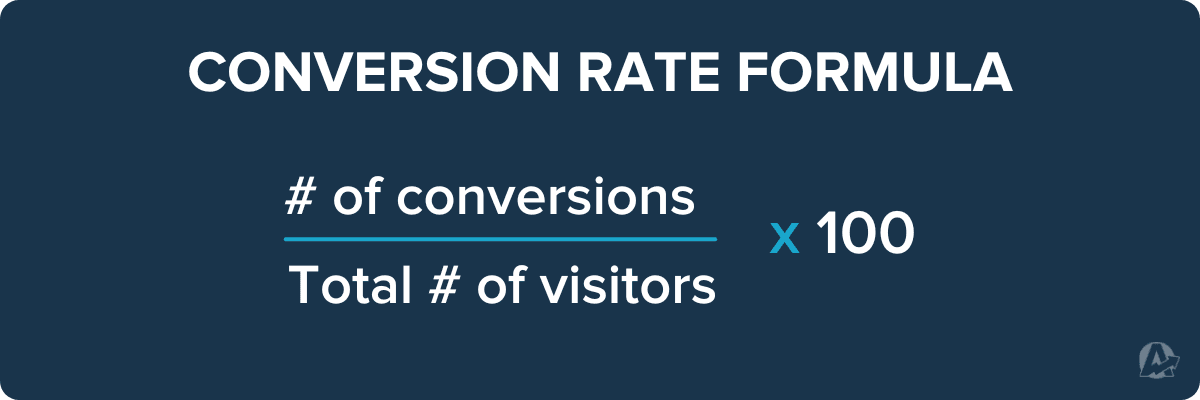
Here’s what this formula looks like in practice. Maybe your agency web page receives 100 total visitors per day. You want as many of those people as possible to click the link to book a phone call with one of your account managers. Every time someone books a call, this is a conversion.
To increase the conversion rate, agencies aim to pull in as many aligned leads as possible from SERP. From there, further consideration is placed on how the web page content is organized to ensure that those leads are compelled to click the button and book a call.
Our agency uses a really detailed contact form on our website to collect as much info as possible before our first discovery call. After a client signs up, they get a second questionnaire that is specific to their campaign. We have different ones for different industries.
Zeke Domowski, CEO, Creatively Innovative
Establish Conversion Goals
Once you’ve calculated your own agency website conversion rate, the next step is setting a goal to help that rate improve. We recommend two steps to help set better goals and increase conversion: Define your perfect customer, and use the MASTER framework.
#1. Define Your ICP
Determine your ideal client profile (ICP) by considering your hypothetical perfect customer and what they’re looking for in an agency. You’ll use market research and data about existing customers in your target audience to figure this out and get higher-quality leads. Here’s what to include in your ICP, and what an example profile might look like:
Professional profile
Role: B2B SaaS Marketing Manager
Skills required: Expertise in digital marketing channels; data analysis; project management.
Typical responsibilities: Develop and execute marketing strategies aligned with business goals.
How their work is measured: Lead generation; customer acquisition cost; web traffic and engagement.
Who they report to: CMO
Who’s involved in hiring them: CMO; HR
Problems, challenges, and pain points: Reaching target audiences effectively; moving leads through funnel.
Personal characteristics: Creativity; communication; decision-making.
Company information: Mid-sized B2B SaaS company with high growth potential.
#2. Use the MASTER Framework
Next, use the MASTER framework to establish goals for improving conversion rates among your site visitors. This goal-setting framework walks you through how to set goals that are Measurable, Achievable, Specific, Transforming, Evolving, and Relevant.
For example:
Goal: Convert 10% more visitors into qualified leads with landing page optimization
Measurable: Track lead generation form submissions and MQL (Marketing Qualified Lead) qualification process.
Achievable: Base the target on current conversion rate and website traffic potential.
Specific: Identify specific landing pages and set a clear percentage increase in qualified leads.
Transforming: Higher qualified lead conversion signifies improved sales pipeline and more valuable prospects.
Evolving: Test different landing page elements and refine CTAs (Calls to Action) for continuous improvement.
Relevant: More qualified leads directly contribute to agency growth and client acquisition.
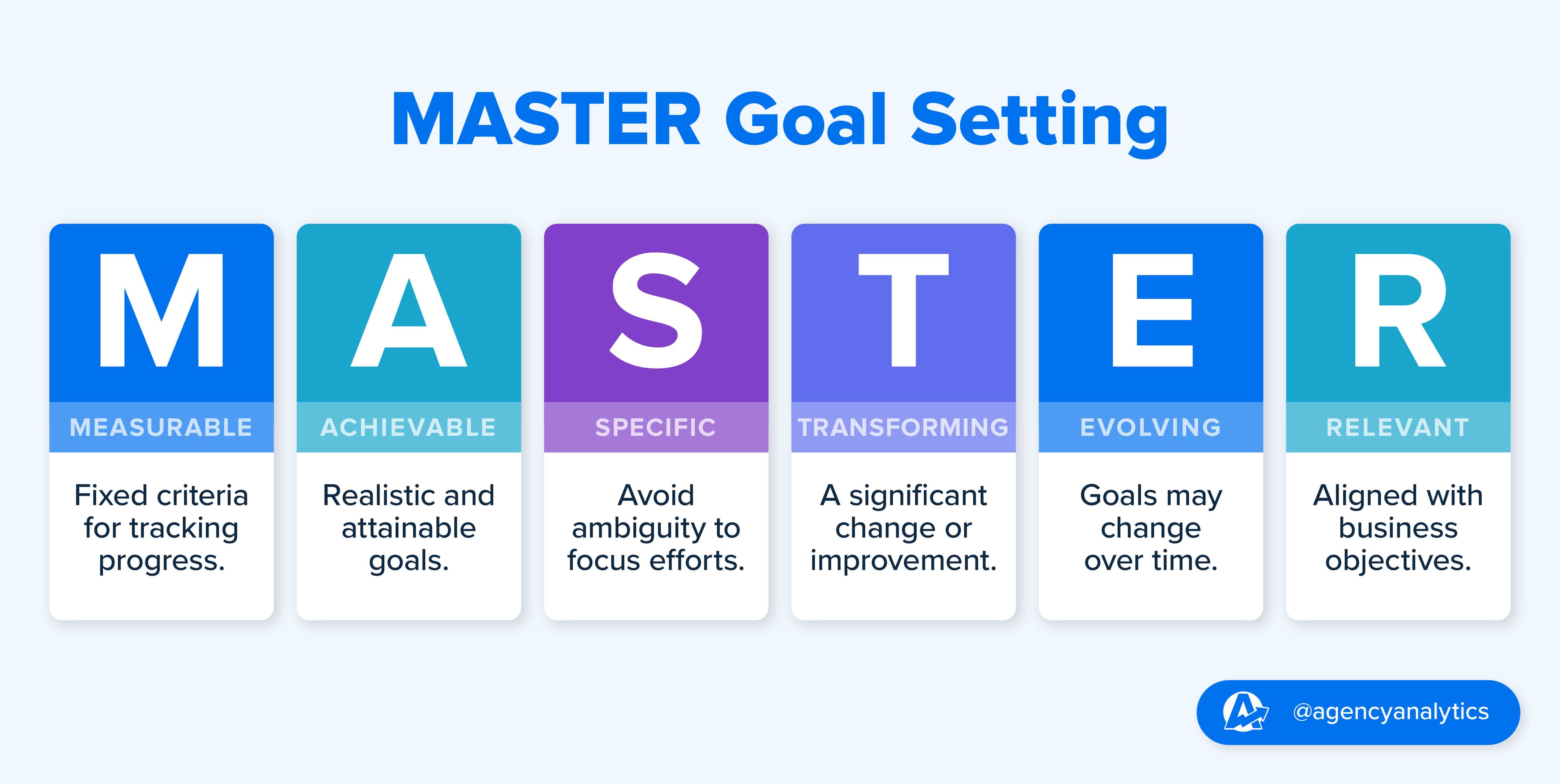
Monitor Conversion Metrics
Once your rate optimization goals and target audience are in place, make sure you’re keeping an eye on conversion metrics and whether they’re trending in the right direction. Track metrics like:
Conversion Rate. Define what counts as a conversion (such as submitting a contact form or signing up for a demo). Then track this metric for your entire website, and individual web pages.
Click-through Rate (CTR). Your CTR is the percentage of visitors who click on a specific link or call-to-action (CTA). It helps measure the effectiveness of your CTAs.
Cost per Acquisition (CPA). This is the average cost of acquiring a new lead or customer through marketing efforts. Use it to evaluate the financial efficiency of your marketing campaigns, and to ensure you’re investing your resources in the most profitable channels and strategies.
Customer Acquisition Cost (CAC). CAC is the total cost of acquiring a customer with marketing, sales, and onboarding expenses. Your customer acquisition costs identify areas to reduce costs or increase customer lifetime value (CLTV).
Customer Lifetime Value (CLV). This metric indicates the total revenue a customer is expected to generate with your agency over their lifetime. A high CLV = strong customer loyalty and profitability.
By setting specific goals we are able to track performance and overall impact of specific campaigns on reaching those goals. For example, if we have a goal to improve conversion rate we might test and see how different ads or different campaigns affect conversions.
Anatoly Zadorozhnyy, SEO Manager, 1on1.net
In addition to these metrics, it’s also helpful for conversion rate optimization (CRO) to look at search engine optimization (SEO) metrics, such as page load speed or bounce rate. (Slow page load may cause potential clients to leave your site before even seeing your offer.)

Use the Salesforce dashboard from AgencyAnalytics to track custom metrics like Customer Acquisition Cost. Try it free for 14 days.
Key Elements To Improve Conversion on Your Agency Website
If your conversion rate isn’t up to par, your website may need some construction to pull in new leads—and then keep them around. Here are the most important elements you should optimize to help website conversion rate increase.
Landing Page Design
Our first conversion rate optimization strategy recommendation is this: Your homepage should have a clear value proposition stating what you offer and for whom. This way, people who land on your website through a search engine results page will know immediately whether your offer is right for them.
What else goes into website landing page design? Make sure your site looks clean, modern, and on-brand. Instead of cluttering up your homepage with different widgets, opt for a sleek look that draws attention to the most important information: your offer. Your site needs to be mobile-friendly, too, creating a good user experience for all types of visitors.
The very first thing we want to do is make sure the branding and the website are in order. It’s telling the story, it's modern, the mobile experience is amazing, it's loading under two seconds. All the things that we expect from a modern digital experience. And then from there it is really pushing hard in search engine optimization, investing a pretty decent amount in Google Ads, Facebook and Instagram Ads.
Dan Delmain, Founder, :Delmain
Website Copy
The copywriting on your agency website and product pages should demonstrate what you offer and why leads should take a desired action. Consider adding a section that addresses your ideal client’s pain point and explaining how you solve it.
It’s also helpful to integrate client reviews and testimonials that prove you deliver on your promises. These might look like brief 2-3 sentence testimonials from previous clients, or a visual “proof bar” including logos of companies you’ve worked with.
Finally, pay attention to the position and wording of your CTAs. Catch your clients’ attention and make sure they understand what’s going to happen if they click. CTAs are normally placed above the fold so website visitors (including people using mobile devices) don’t have to scroll down to see them. Common choices for CTA button copy include:
Let’s Talk
Play Demo
Start Free Trial
We are convinced that both highly engaging on-page content and optimized blog content are part of our secret to success. Frequently we are finding blog content can cast a broader net and attract traffic that may not otherwise find our clients. This offers us the ability to attract "peripheral" traffic and engagement we can then cultivate into conversion.
Christian Evans, President & CEO, Evans Alliance
Navigation and Site Structure
The next item to consider to help increase your site’s conversion rate is your website’s structure and navigation. Your goal is to simplify the user experience by making it obvious what you’re offering and how your potential clients can contact you. Otherwise, they’ll bounce!
Your website should have a logical page flow that makes it easy for clients to find what they’re looking for. Place critical elements—such as contact forms, CTAs, and other key information— prominently on the page. Methods like a heatmap analysis or the 5-second test can help you determine whether your design is effective based on the natural flow of the eye.
Have a clear contact form so website visitors know how to get in touch with you and whether your services are right for them. For example, you might ask for information like:
Name and email
Company and role
Marketing goals and budget
Page Speed
Page speed is a critical element that can make or break your conversion rate. Not convinced? A site that loads in one second has a conversion rate 3x higher than a site that loads in five seconds, and 5x higher than a site that loads in 10 seconds.
Ways to optimize your page speed and increase conversions include the following:
Compress images
Enable lazy loading (load images when they enter a user’s viewpoint to reduce initial load time)
Upgrade your hosting plan
Minimize redirects
Measure and test your website’s page speed (with tools like Pingdom Website Speed Text, GTmetrix, and Google PageSpeed Insights)
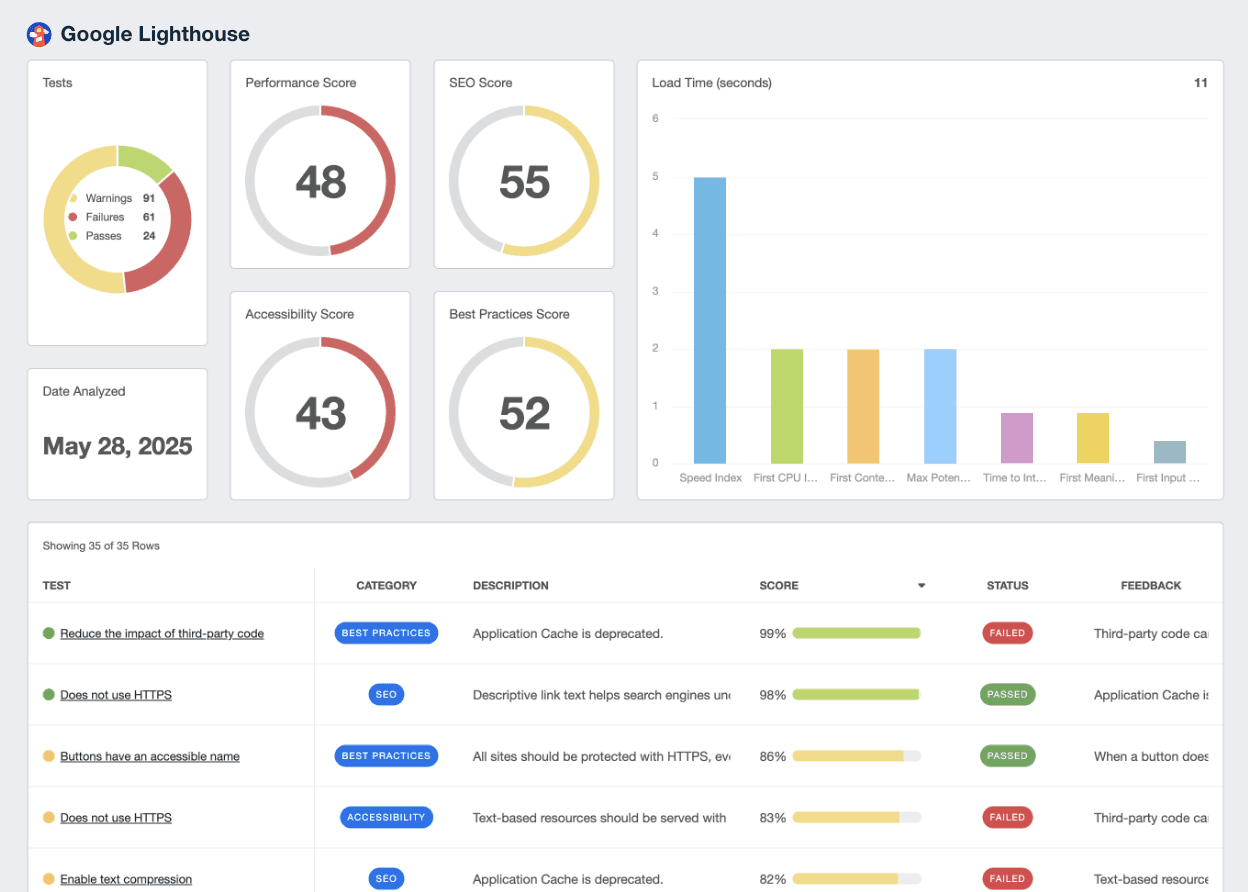
Run audits on your agency’s website performance with the AgencyAnalytics Google Lighthouse integration. Join more than 7,000 marketing agency clients by signing up for a free 14-day trial today.
Best Practices for Website Conversion Rate Optimization
Is your website optimized and ready to attract new leads to begin their customer journey? Here are a few additional best practices you should follow to make sure your website stays ready to grab the attention of visitors.
Use A/B Testing
Use A/B testing (also called split testing) on landing pages. With an A/B test, you create two versions of a web page and see which one produces better results. This is an efficient way to see what copy resonates most with your clients. Clearly record the changes you’re making so you can implement the ones that positively affect your conversion rate.
AgencyAnalytics provides valuable data and insights on your landing pages. Our Unbounce integration lets you monitor and report on your pages, leads, and conversions to see how each one is performing according to user behavior.

Start tracking your agency’s landing page performance today, to land more leads tomorrow. Try AgencyAnalytics free for 14 days.
Offer a Freebie
Create a freebie or run a giveaway to entice visitors into submitting their email address during the conversion funnel. This free offering is called a lead magnet and allows you to get a lead’s contact information in exchange for something that is valuable to them. As an agency, you might offer a lead magnet such as a:
Case study
White paper
Ebook
Email course
Free audit or consultation
Think about what your ideal lead is looking for, and what existing content you could repackage into a lead magnet. This is a good place to start.
Leverage Social Media
Social media is a great way to drive additional traffic to your website. Consider where your ICP spends their time online. Are they primarily scrolling LinkedIn? Instagram? TikTok? If you aren’t sure, traffic and conversion data will help you get a sense of how people find your site. Go where your clients are, create a branded account, and post regularly. Share links to your website (for some social platforms, like Instagram, you’ll need a link-in-bio tool to do this) to increase your traffic.
As a digital marketing agency, we're very good at our own digital marketing. And so, we get a lot of clients coming through our marketing activity. So people convert on our website through finding us in organic search, paid search, or social media. That's where the majority of our leads come from.
Claire Daniels, CEO, Trio Media
How Do I Track My Conversion Rate?
Conversion rate optimization strategies are not a one-and-done process. Improving your conversion rate is a continuous cycle. Use the insights you gain from A/B testing and AgencyAnalytics data to constantly refine your landing pages. Don’t be afraid to experiment, test new approaches, and adapt your strategy based on real-time data from conversion rate optimization tools. You’ll want to:
Identify trends. Are conversions rising or falling? Can you link changes to specific updates or marketing campaigns, or are the changes seasonal? What patterns do you notice?
Predict future trends. Use historical data to forecast future conversion rates and adjust your marketing strategy accordingly.
Detect anomalies. Continuous tracking helps you detect sudden changes in conversion rates. These anomalies may indicate issues or opportunities that require attention, allowing you to take prompt action.
Benchmark against competitors. See how your conversion rate stacks up against industry averages and target specific areas for improvement.
Optimize strategies and goals. Tracking over time provides insight into the effectiveness of optimization strategies. You’ll also get a benchmark for performance improvement. This helps align your objectives with the growth trajectory of your agency.
Best Tools for User Research and Conversion Rate Optimization
User research is a great way to get valuable information on how to further optimize your website through the conversion rate optimization process. Some conversion rate optimization tools (or CRO tools) are qualitative, measuring data you’ve collected “in the field.” Others are quantitative. These rely purely on numerical data.
Qualitative Tools
Qualitative tools for conversion optimization include:
User interviews and surveys to gain firsthand insights into what’s going on inside a visitor’s head when they interact with your landing page. Try UserTesting to conduct remote user testing, or Wynter to understand customer insight.
Heatmaps, session recordings, and click testing to visualize where visitors click, revealing hidden UX issues. Use Hotjar for heatmaps, session recordings, and surveys, and Crazy Egg for heatmaps, scroll maps, and user recordings.
Quantitative Tools
Quantitative tools to improve website conversion rate and website optimization include:
Website analytics platforms like Google Analytics to set conversion goals and track key metrics, like traffic sources, user demographics, and conversion funnels.
Customer relationship management (CRM) integrations like Salesforce and HubSpot to analyze how landing page leads and website visitors progress through your sales pipeline and to identify conversion bottlenecks.
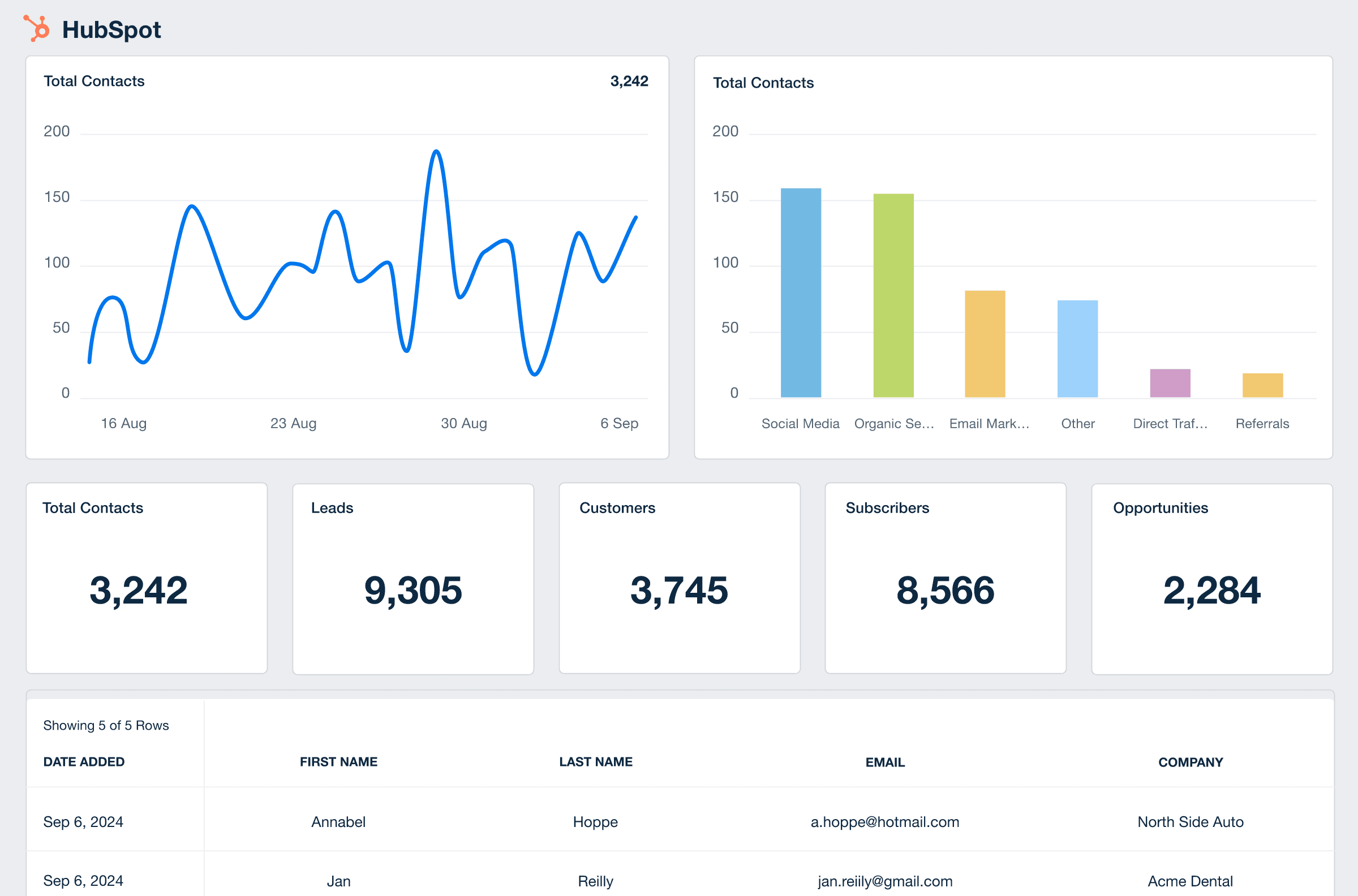
Track how leads travel through your agency sales funnel with the AgencyAnalytics Hubspot integration. Try it free for 14 days.
Tools for Measuring Improvement
We recommend the following tools to help measure website improvement through your conversion rate optimization efforts over time:
Optimizely lets agencies conduct A/B testing and multivariate testing to improve conversion.
Visual Website Optimizer offers A/B testing, split URL testing, and multivariate testing.
Work With AgencyAnalytics
AgencyAnalytics keeps all of your clients’ data under one convenient roof. You’ll also get access to fully automated reports and custom dashboards to help scale your marketing agency. Plus, use the Google Analytics integration to automatically track key web analytics metrics and custom reports.
Key Takeaway
If you want to land more high-quality leads from your website visitors, a fully optimized agency website is not optional—it’s a must. Use strategies like A/B testing, Google Analytics, and optimization tools to make sure every element of your site is up to par. Then continue to track and refine the numbers over time to see your website conversion rate go up.
AgencyAnalytics is a great place to start. We help you track metrics like your conversion rate, bounce rate, and more—important numbers that will provide the information you need to make your website as good as it can be. Sign up for a free 14-day trial to get started improving the performance of your agency site.

Written by
Hailey is a full-time writer and content marketer based in Atlanta who specializes in providing unique insights into the worlds of wellness and digital marketing. A storyteller at heart, she is a self-admitted nerd about all things digital.
Read more posts by Hailey HudsonSee how 7,000+ marketing agencies help clients win
Free 14-day trial. No credit card required.



